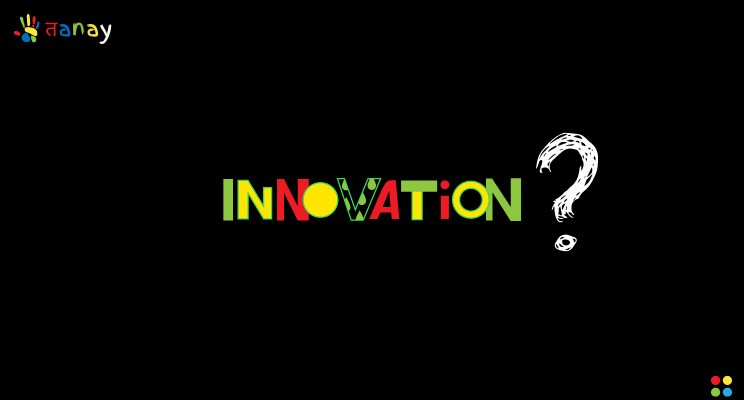Innovation is at the heart of human progress. It is the driving force that has allowed us to achieve great things, from inventing the wheel to landing on the moon. But what exactly is innovation, and how do innovative ideas arise?
Innovation is the act of creating something new or improving upon something that already exists. It is a process that involves identifying a need or opportunity, coming up with an idea, and then turning that idea into a reality. While innovation can come in many forms, from new products and services to new business models and processes, the underlying principles are the same.

So how do innovative ideas arise? While there is no one formula for innovation, there are several key factors that tend to play a role in the process. These include:
1. Identifying a problem or opportunity
Innovation often arises out of a need or opportunity. When someone identifies a problem or a gap in the market, they may start thinking about ways to address it. This could be as simple as coming up with a new product that solves a common problem, or as complex as developing a new technology that transforms an entire industry.
2. Challenging assumptions
To come up with truly innovative ideas, it is often necessary to challenge assumptions and question the status quo. This might mean thinking outside the box, taking a different perspective, or even breaking the rules. By challenging assumptions, innovators can uncover new possibilities and opportunities that might otherwise have gone unnoticed.
3. Encouraging creativity and collaboration
Innovation thrives in environment that encourage creativity and collaboration. When people are given the freedom to explore new ideas and work together to solve problems, new and innovative solutions can emerge. This is why many organizations are investing in open workspaces, hackathons, and other initiatives that foster creativity and collaboration.
4. Embracing failure
Innovation is not always a straight path. There are going to be failures and setbacks along the way. But rather than seeing failure as a roadblock, innovators embrace it as an opportunity to learn and grow. By being willing to take risks and learn from mistakes, they are able to refine their ideas and ultimately achieve greater success.
5. Leveraging technology
Technology has become a key driver of innovation in many industries. From artificial intelligence (AI) and machine learning (ML) to virtual reality (VR) and blockchain technology, there are countless tools and platforms that can be leveraged to create new products and services. By staying up-to-date with the latest technological advancements, innovators can stay ahead of the curve and create new opportunities. This knowledge can be used to create new products or services.
6. Staying curious
Finally, innovation requires a certain level of curiosity and a willingness to explore new ideas and possibilities. When people stay open-minded and curious, they are more likely to discover new insights and opportunities that can lead to innovation. This is why many innovators are highly curious and passionate about their work, constantly seeking out new challenges and opportunities to push the boundaries of what is possible.
7. Exposure to new cultures and perspectives
Travelling to different parts of the world exposes individuals to new cultures, traditions, and perspectives. This exposure can inspire individuals to meet, collaborate with new people and come up with new innovative ideas.
These interactions can lead to the exchange of ideas and innovation. Overall, travelling can broaden an individual’s horizons and provide new experiences that can lead to innovation and new ideas.

In addition to these factors, there are also several approaches and methodologies that can help stimulate innovative thinking. These include:
A. Design thinking: A human-centered approach to innovation that involves empathizing with users, defining problems, ideating solutions, prototyping, and testing.
B. Lean startup methodology: An approach to entrepreneurship that focuses on creating and testing a minimum viable product (MVP) as quickly as possible, and then iterating based on feedback.
C. Agile methodology: A project management approach that emphasizes flexibility, rapid iteration, and collaboration between cross-functional teams.
D. Blue Ocean strategy: A framework for creating new markets or industries by identifying and exploiting untapped opportunities, rather than competing in existing markets.
E. Mind Mapping: The mind mapping model of innovation is a visual technique used to generate and organize ideas and concepts. It involves creating a hierarchical diagram that branches out from a central concept or idea. The following are the key components of the mind mapping model of innovation. The mind mapping model of innovation is a powerful tool for brainstorming, problem-solving and innovation, helping to stimulate creativity and organize thoughts in a clear and logical manner.

By combining these approaches and methodologies with the key factors that drive innovation, it is possible to create an environment that fosters innovative thinking and allows new ideas to flourish. Ultimately, the process of how innovative ideas arise is complex and multifaceted. It involves identifying opportunities, challenging assumptions, fostering creativity and collaboration, embracing failure, leveraging technology, staying curious, exposure to new cultures and using a variety of approaches and methodologies to stimulate innovative thinking. While there is no one-size-fits-all approach to innovation, by following these principles and staying open-minded and curious, anyone can develop the mindset and skills needed to come up with truly innovative ideas.
 About Author –This article is originally published in TANx by Tanay Singh.(Author, Entrepreneur, Researcher, Life coach, Motivational Speaker, Business Consultant & Digital Marketer).
About Author –This article is originally published in TANx by Tanay Singh.(Author, Entrepreneur, Researcher, Life coach, Motivational Speaker, Business Consultant & Digital Marketer).

